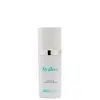What's inside
What's inside
 Key Ingredients
Key Ingredients

 Benefits
Benefits

 Concerns
Concerns

No concerns
 Ingredients Side-by-side
Ingredients Side-by-side

Water
Skin ConditioningGlycerin
HumectantCaprylic/Capric Triglyceride
MaskingHydroxyethyl Acrylate/Sodium Acryloyldimethyl Taurate Copolymer
Emulsion StabilisingSqualane
EmollientAminopropyl Ascorbyl Phosphate
AntioxidantSodium Hyaluronate
HumectantHydrolyzed Sodium Hyaluronate
Skin ConditioningCutaneous Lysate
MoisturisingTetrapeptide-21
Skin ConditioningPalmitoyl Tripeptide-1 Acetate
Skin ConditioningButylene Glycol
HumectantEthylhexylglycerin
Skin ConditioningPullulan
Acetyl Glucosamine
Skin ConditioningEthylene/Acrylic Acid Copolymer
Emulsion StabilisingPolysorbate 60
EmulsifyingProline
Skin ConditioningArginine
MaskingGlycine
BufferingGlutamine
Skin ConditioningChlorphenesin
AntimicrobialNannochloropsis Oculata Extract
HumectantCapryloyl Carnosine
Skin ConditioningPoloxamer 338
EmulsifyingSilica
AbrasiveTrifluoroacetyl Tripeptide-2
Skin ConditioningDextran
Sorbitan Isostearate
EmulsifyingPotassium Sorbate
PreservativeSodium Benzoate
MaskingTocopherol
AntioxidantDisodium EDTA
Sodium Hydroxide
BufferingPhenoxyethanol
PreservativeWater, Glycerin, Caprylic/Capric Triglyceride, Hydroxyethyl Acrylate/Sodium Acryloyldimethyl Taurate Copolymer, Squalane, Aminopropyl Ascorbyl Phosphate, Sodium Hyaluronate, Hydrolyzed Sodium Hyaluronate, Cutaneous Lysate, Tetrapeptide-21, Palmitoyl Tripeptide-1 Acetate, Butylene Glycol, Ethylhexylglycerin, Pullulan, Acetyl Glucosamine, Ethylene/Acrylic Acid Copolymer, Polysorbate 60, Proline, Arginine, Glycine, Glutamine, Chlorphenesin, Nannochloropsis Oculata Extract, Capryloyl Carnosine, Poloxamer 338, Silica, Trifluoroacetyl Tripeptide-2, Dextran, Sorbitan Isostearate, Potassium Sorbate, Sodium Benzoate, Tocopherol, Disodium EDTA, Sodium Hydroxide, Phenoxyethanol
Ingredients Explained
These ingredients are found in both products.
Ingredients higher up in an ingredient list are typically present in a larger amount.
Acetyl Glucosamine is an antioxidant and humectant. It is an amino acid sugar and is naturally found in our skin.
The cool thing about this ingredient? It helps the skin produce hyaluronic acid and boost hydration. It also has antioxidant benefits to protect skin cells.
When paired with niacinamide, Acetyl Glucosamine has been shown to be effective at reducing discoloration.
Learn more about Acetyl GlucosamineThis ingredient is created by putting sodium hyaluronate through hydrolysis.
You might know this as 'mini' or 'ultra low-molecular weight' hyaluronic acid. The small molecule size means it is able to travel deeper in the skin.
According to studies, low molecular-weight hyaluronic acid can:
One study from 2011 found ultra-low weight HA to show pro-inflammatory properties. Another study from 2022 found it to downregulate UV-B induced inflammation.
Hydrolysis is a process of changing a molecule using water or enzymes.
This ingredient is water-soluble.
Learn more about Hydrolyzed Sodium HyaluronatePhenoxyethanol is a preservative that has germicide, antimicrobial, and aromatic properties. Studies show that phenoxyethanol can prevent microbial growth. By itself, it has a scent that is similar to that of a rose.
It's often used in formulations along with Caprylyl Glycol to preserve the shelf life of products.
Sodium Hyaluronate is hyaluronic acid's salt form. It is commonly derived from the sodium salt of hyaluronic acid.
Like hyaluronic acid, it is great at holding water and acts as a humectant. This makes it a great skin hydrating ingredient.
Sodium Hyaluronate is naturally occurring in our bodies and is mostly found in eye fluid and joints.
These are some other common types of Hyaluronic Acid:
Learn more about Sodium HyaluronateWater. It's the most common cosmetic ingredient of all. You'll usually see it at the top of ingredient lists, meaning that it makes up the largest part of the product.
So why is it so popular? Water most often acts as a solvent - this means that it helps dissolve other ingredients into the formulation.
You'll also recognize water as that liquid we all need to stay alive. If you see this, drink a glass of water. Stay hydrated!
Learn more about Water